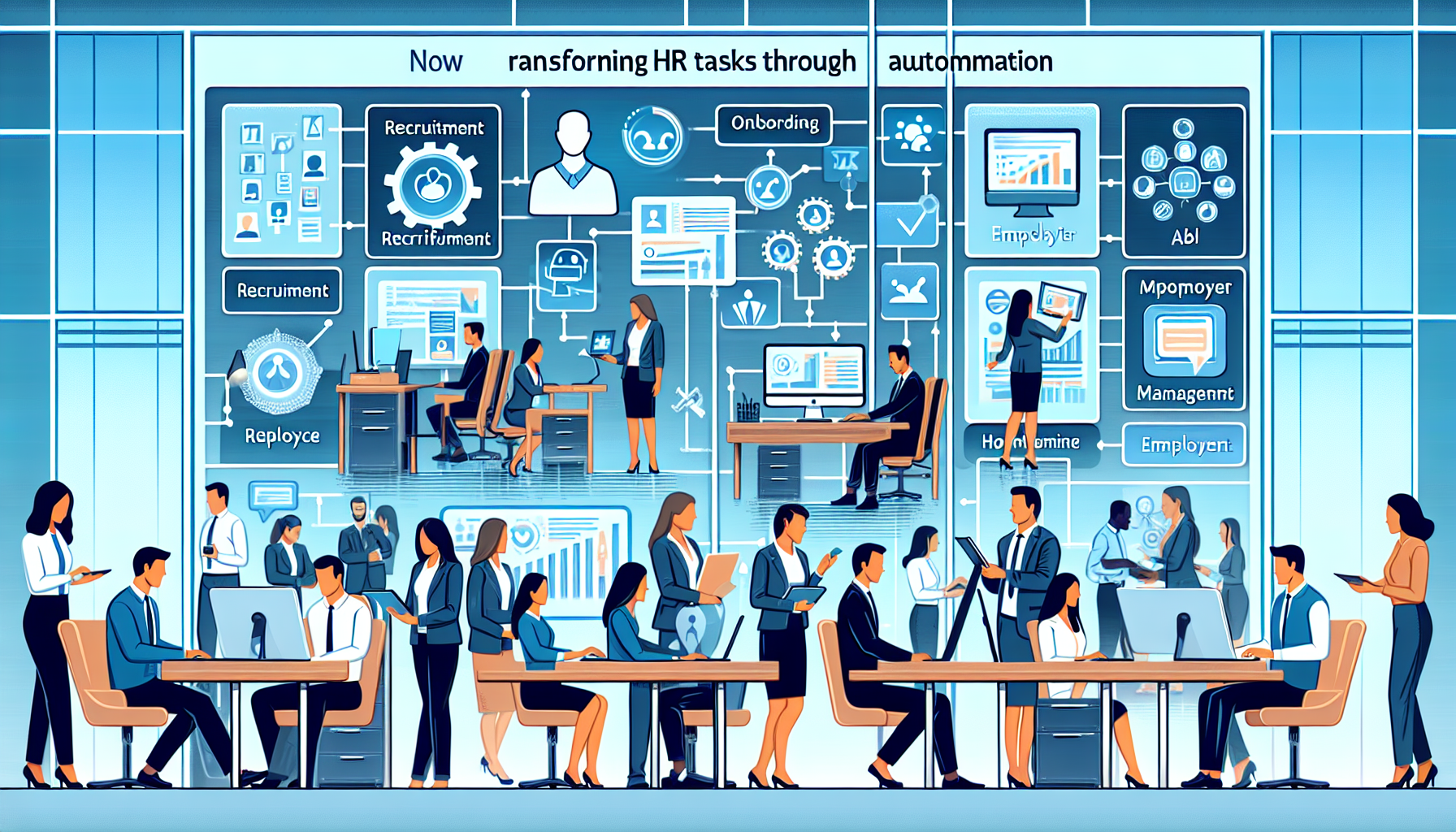The Power of Automation: Transforming HR Tasks for Small Enterprises
Understanding Automation in Human Resources
Automation in human resources refers to using technology to streamline and enhance various HR functions. For small enterprises, which often have limited resources, automation can significantly improve efficiency, reduce manual errors, and free up valuable time for strategic initiatives. Tasks that traditionally consume hours of HR personnel’s time can now be managed with the click of a button, allowing small businesses to focus on growth and employee engagement.
Key Benefits of HR Automation for Small Enterprises
- Time Efficiency
Manual HR processes, such as payroll management, employee onboarding, and attendance tracking, can be time-intensive. Automation accelerates these processes, enabling HR staff to allocate their time to more strategic activities. For example, automated payroll systems can calculate wages, deduct taxes, and generate pay stubs, significantly reducing the hours spent on these activities.
- Cost Savings
For small businesses, cutting down operational costs is essential. By automating repetitive tasks, small enterprises can reduce the need for additional HR personnel. Furthermore, automation minimizes errors that can lead to costly compliance issues or payroll discrepancies, ensuring businesses save money in the long run.
- Increased Accuracy and Compliance
Automated systems excel in maintaining data accuracy, as they eliminate the risk of human error. For HR departments, compliance with labor laws and regulations is critical. Automated systems can be updated in real-time to reflect changes in legislation, ensuring that small enterprises remain compliant without manually tracking each alteration in the law.
- Streamlined Recruitment Processes
Recruitment can be managed more effectively through automation. Applicant Tracking Systems (ATS) help small businesses manage job listings, applications, and candidate communications in a centralized platform. With a few clicks, HR teams can filter through applications, schedule interviews, and engage with candidates, significantly reducing the time-to-hire.
- Improved Employee Engagement
Automating routine HR tasks enables HR teams to invest more time in developing employee engagement strategies. With automated performance reviews and feedback systems, employees receive timely evaluations and constructive feedback. Additionally, automation can facilitate easy communication channels between employees and management, leading to a more engaged workforce.
Essential HR Tasks to Automate
- Onboarding
Automating the onboarding process ensures a smooth introduction for new hires. Digital onboarding tools can streamline document collection, policy acknowledgment, and training schedules. By providing new employees with a structured onboarding experience, small enterprises can reduce turnover rates and boost early productivity.
- Time and Attendance Tracking
Using software to track employee hours and attendance simplifies scheduling and ensures accurate payroll. Innovations such as biometric time clocks and mobile time-tracking apps allow employees to log their hours effortlessly, while HR staff can easily generate reports to manage workforce availability proactively.
- Employee Records Management
Managing employee records manually can lead to lost files and outdated information. HR automation tools offer secure, centralized locations for storing employee documents, ensuring instant access and enhancing data security. This system can also automate regular updates, such as changes in address or benefits selections.
- Performance Management
Standardizing performance management through automation can enhance objectivity and reduce bias. Automated systems facilitate regular check-ins, set measurable goals, and produce comprehensive performance reports. Employee development plans can also be created and tracked, aligning staff efforts with organizational objectives.
- Payroll Management
Automated payroll systems help calculate wages, withhold taxes, and ensure compliance with local labor laws seamlessly. Such systems can also facilitate deductions and direct deposits, ensuring that employees are paid accurately and on time every pay period.
Choosing the Right Automation Tools
When selecting automation tools for HR tasks, small enterprises should consider various factors:
-
User-Friendliness: The ideal software should have an intuitive interface that doesn’t require extensive training. Employees should be able to navigate it with ease.
-
Scalability: Choose tools that can grow with your business. As the workforce expands or changes, HR automation tools should adapt.
-
Integration Capabilities: Seamless integration with existing systems, such as accounting software and customer relationship management (CRM) tools, ensures all HR processes align with business operations.
-
Cost Effectiveness: While some automation software may require a substantial initial investment, evaluating long-term savings and efficiency gains is essential. Look for solutions that offer tiered pricing to accommodate small business budgets.
-
Vendor Support: Reliable customer service is crucial. Ensure that the chosen vendor provides support and updates to address any potential issues swiftly.
Best Practices for Implementing HR Automation
-
Assess Needs: Determine which HR tasks consume the most time or pose the most risk before implementing automation solutions. Focus on automating these processes first.
-
Engage Employees: Involve HR personnel in the selection and implementation of automation tools. Their insights can provide valuable feedback and increase the likelihood of adoption.
-
Start Small: Begin with one or two tasks to automate, assess the results, and gradually expand your automation efforts as comfort with the technology increases.
-
Train Users: Provide thorough training for employees who will use the automated systems. Offering resources, such as tutorial videos or workshops, promotes proficiency and confidence.
-
Monitor Performance: Regularly review the effectiveness of the automated processes. Gather feedback from users and adjust workflows or tools as needed to improve efficiency.
The Future of HR Automation for Small Enterprises
The landscape of HR automation is continually evolving. Future advancements will likely involve artificial intelligence (AI) and machine learning technologies that can predict talent needs, identify skill gaps, and enhance employee engagement through personalized experiences. As these technologies become more accessible, small enterprises will be well-positioned to harness their potential and maintain a competitive edge in the market.
By embracing automation, small businesses can transform their HR practices, leading to enhanced efficiency, better employee experiences, and improved overall productivity. Investing in automation not only equips small enterprises for current challenges but also prepares them for future growth and success in a rapidly changing business environment.


